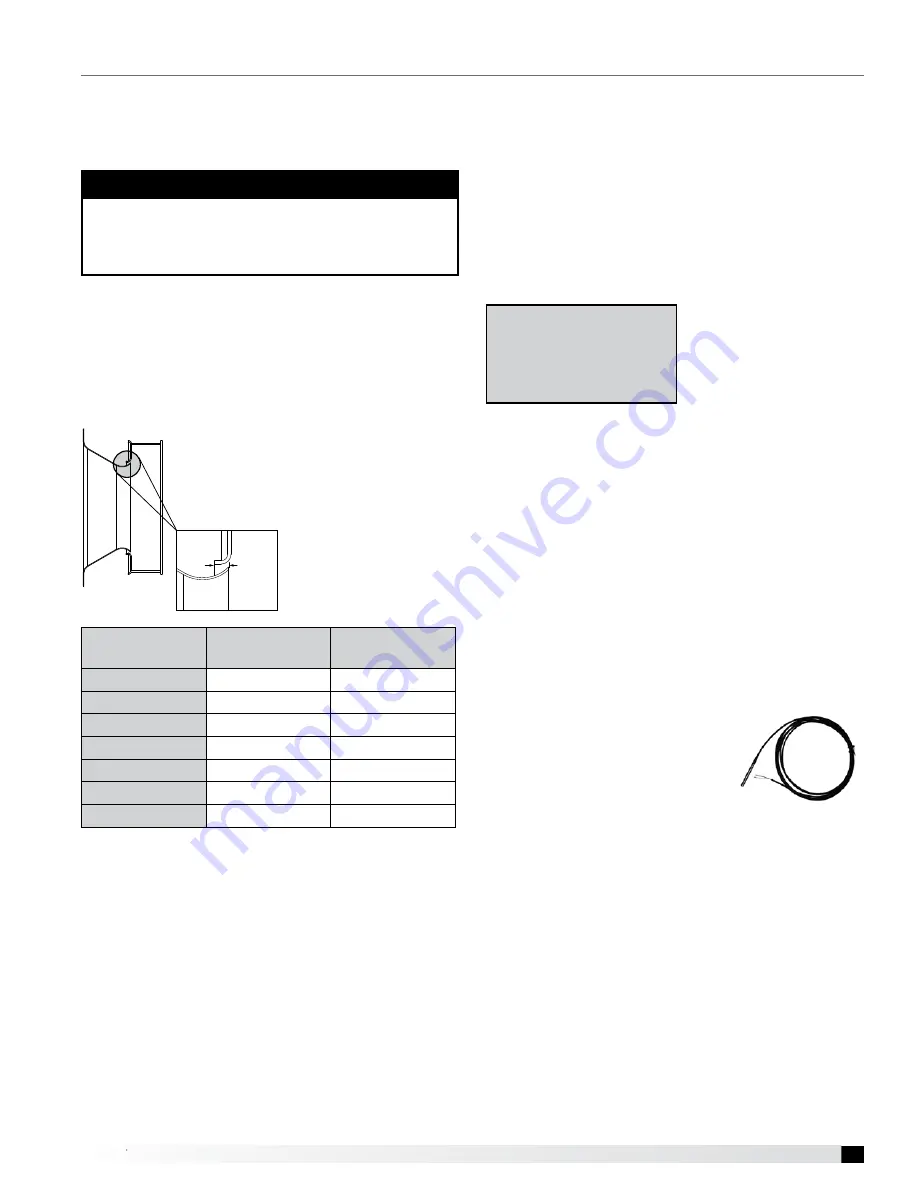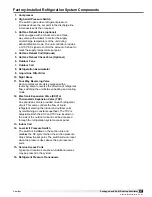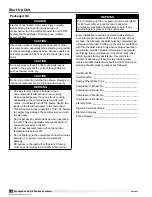
35
Packaged and Split Rooftop Ventilator
© 2021 Mitsubishi Electric US, Inc.
Premi
Sys
Start-Up Components
CAUTION
When operating conditions of the fan are to be
changed (speed, pressure, temperature, etc.), consult
manufacturer to determine if the unit can operate
safely at the new conditions.
Supply Fan (Plenum Type)
The unit contains one or two plenum supply fans
located on the end of the unit opposite the outdoor air
intake and may optionally have a relief air blower which
is referred to as an exhaust blower in this document.
Efficient fan performance can be maintained by having
the correct offset.
Refer to the respective Installation, Operation and
Maintenance Manual shipped with this unit for additional
start-up and maintenance information regarding the
plenum fan.
Fan
The fan should be checked for free rotation. If any
binding occurs, check for concealed damage and
foreign objects in the fan housing.
Inlet
Cone
Wheel
Offset
Offset:
Proper offset, or overlap, is
adjusted by loosening the wheel hub
from the shaft and moving the wheel
to the desired position along the shaft.
The transition between the inlet cone
and the wheel should
be as shown; there is
a smooth feel to the
profile when moving one
component to the other.
Fan Size
Offset
(inches)
Tolerance
(inches)
ER35C
5/32
± 1/32
ER45C
3/16
± 1/32
ER50C
13/64
± 1/32
ER56C
1/4
± 1/32
PDL-355
5/32
± 1/32
PRM-450
3/16
± 1/32
PRM-560
15/64
± 1/32
Supply/Exhaust Fan
The optional exhaust fan is a direct-drive plenum type.
Fan speed is controlled by a VFD which, in turn, is
controlled by the microprocessor controller or by an
external signal. Motor speed will be set on the VFD
during the unit Test and Balance, but after that, the
VFD will not normally be changed. Always check the
motor amperage rating shown on the motor nameplate
when changing the fan RPM. All access doors must be
installed except the control center door.
Vibration
Excessive vibration may
be experienced during
initial start-up. Left
unchecked, excessive
vibration can cause a
multitude of problems,
including structural and/
or component failure. The most common sources of
vibration are listed.
Many of these conditions can be discovered by careful
observation. Refer to the Troubleshooting section of
this manual for corrective actions. If observation cannot
locate the source of vibration, a qualified technician
using vibration analysis equipment should be consulted.
Generally, fan vibration and noise is transmitted to other
parts of the building by the ductwork. To eliminate this
undesirable effect, the use of flexible connectors is
recommended.
Discharge Air Temperature Sensor
Units are supplied with a Discharge Air Temperature
Sensor that is to be field-installed prior to unit start-
up. The sensor is to be installed
at least three duct diameters
downstream of the heat
exchanger. The sensor must
be connected directly to the
microprocessor controller. All
other sensors and low voltage
devices are to be connected to
the low voltage terminal strip in
the control center. The discharge air sensor is shipped
loose and can be found in the unit’s control center.
See the unit-specific wiring diagram for connection
locations.
Vibration Causes
Off axis or loose components
Drive component unbalance
Poor inlet / outlet conditions
Foundation stiffness
Typical Discharge Air
Temperature Sensor
Fan Wheel Rotation Direction
Check for proper wheel rotation by momentarily
energizing the fan. Rotation is determined by viewing
the wheel from the drive side and should match the
rotation decal affixed to the fan housing.
If the wheel is rotating the wrong way, direction can be
reversed by interchanging any two of the three electrical
leads. Check for unusual noise, vibration or overheating
of the bearings. Refer to the Troubleshooting portion of
this manual if a problem develops.
















































